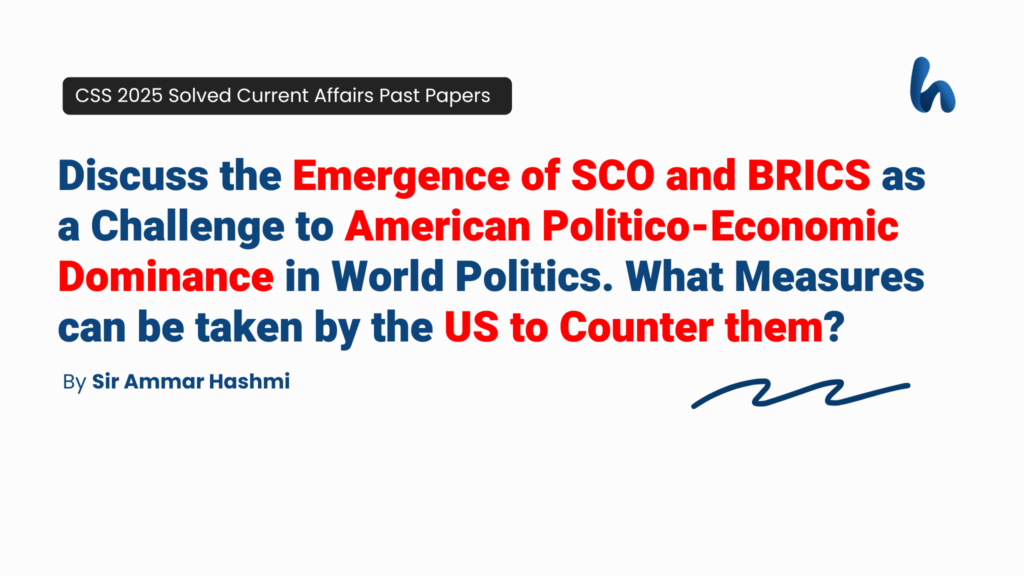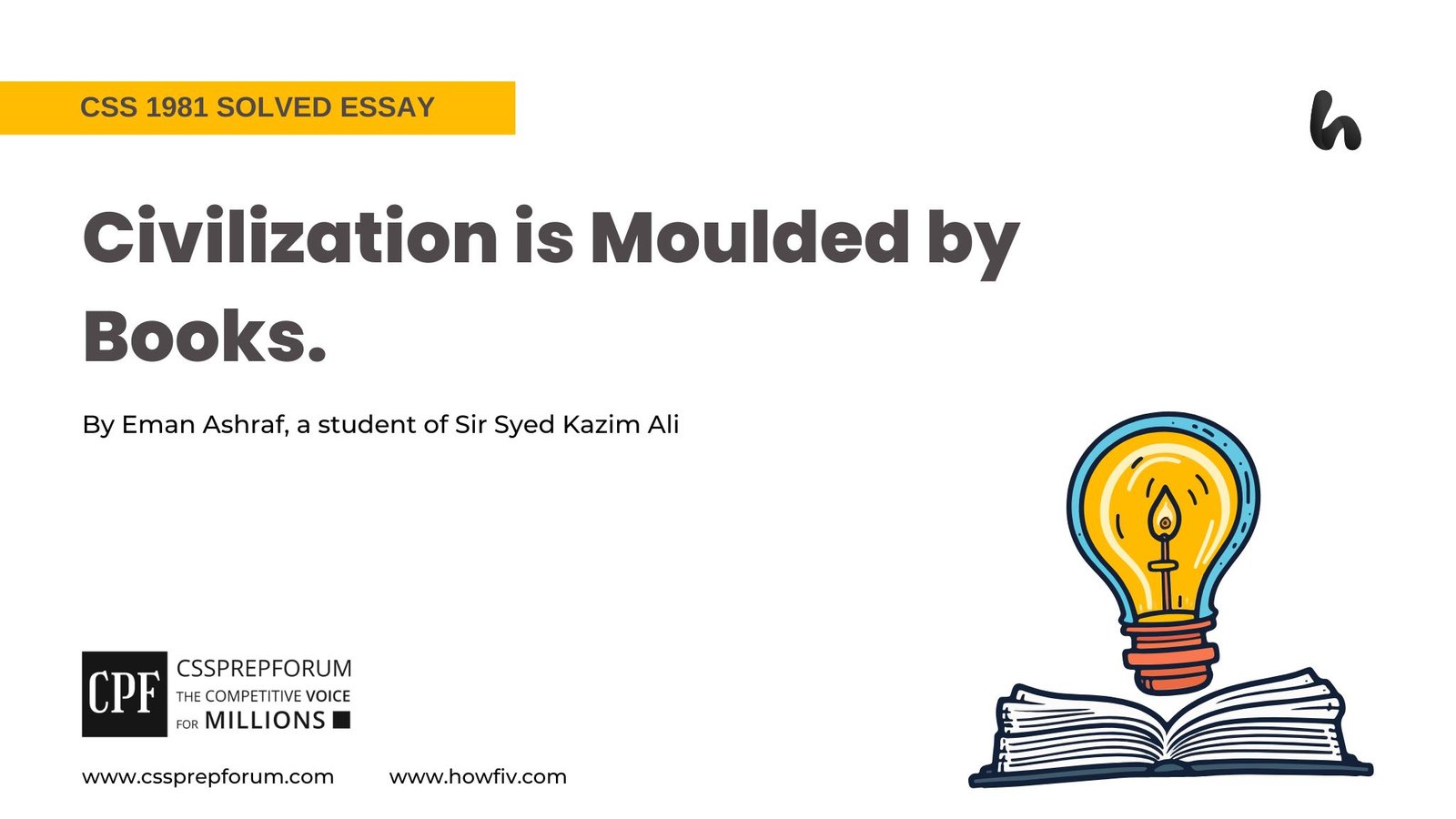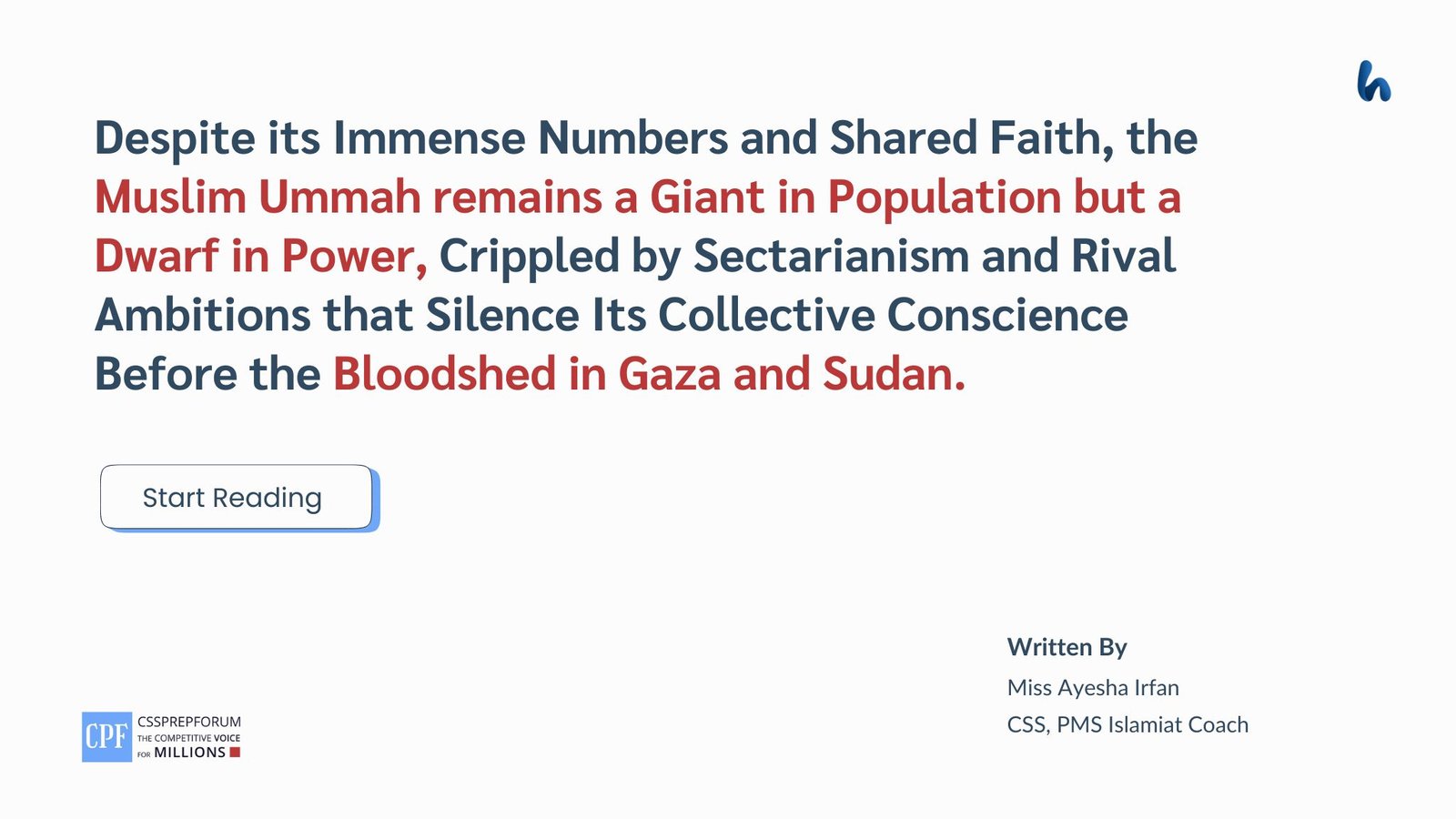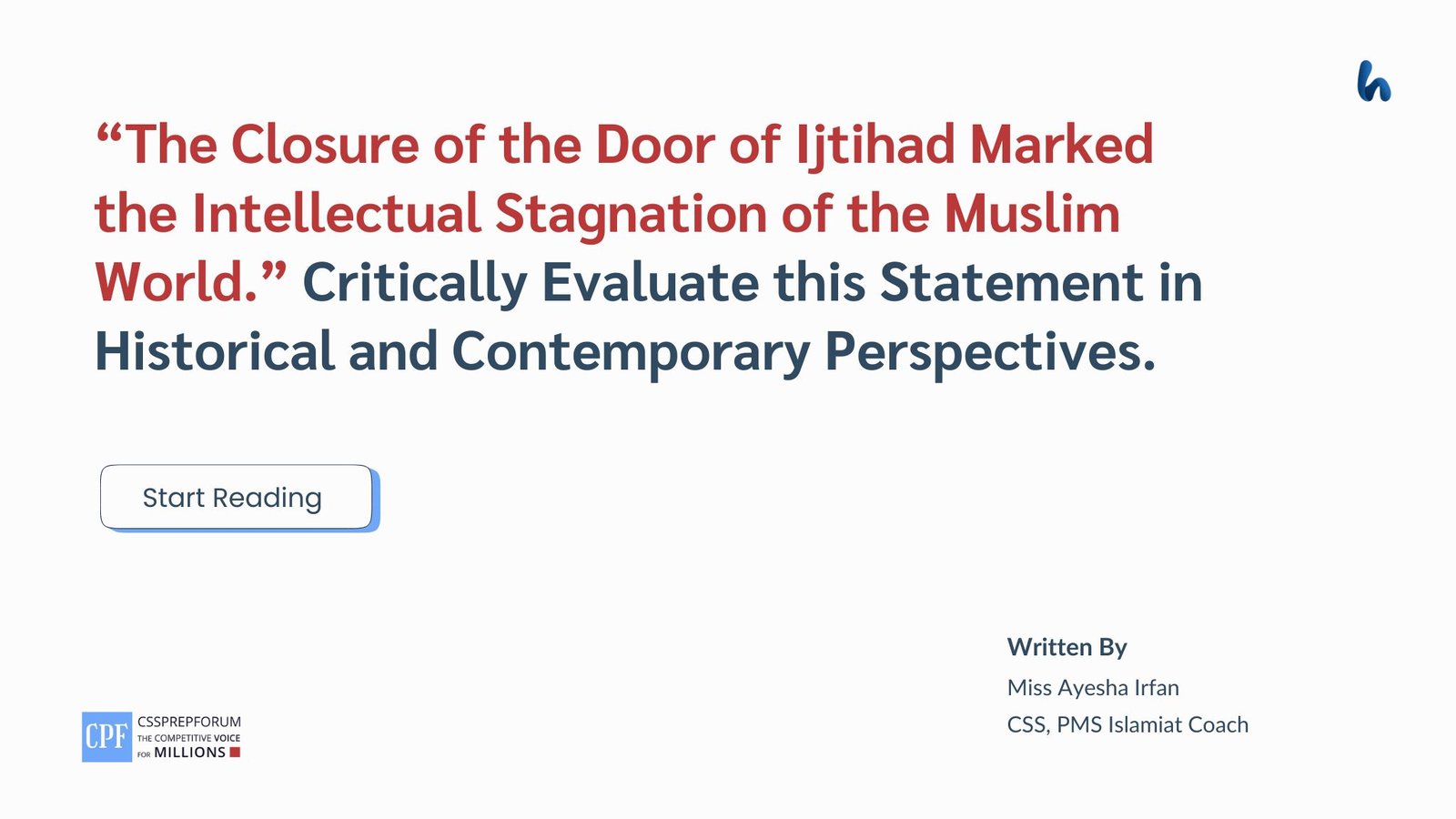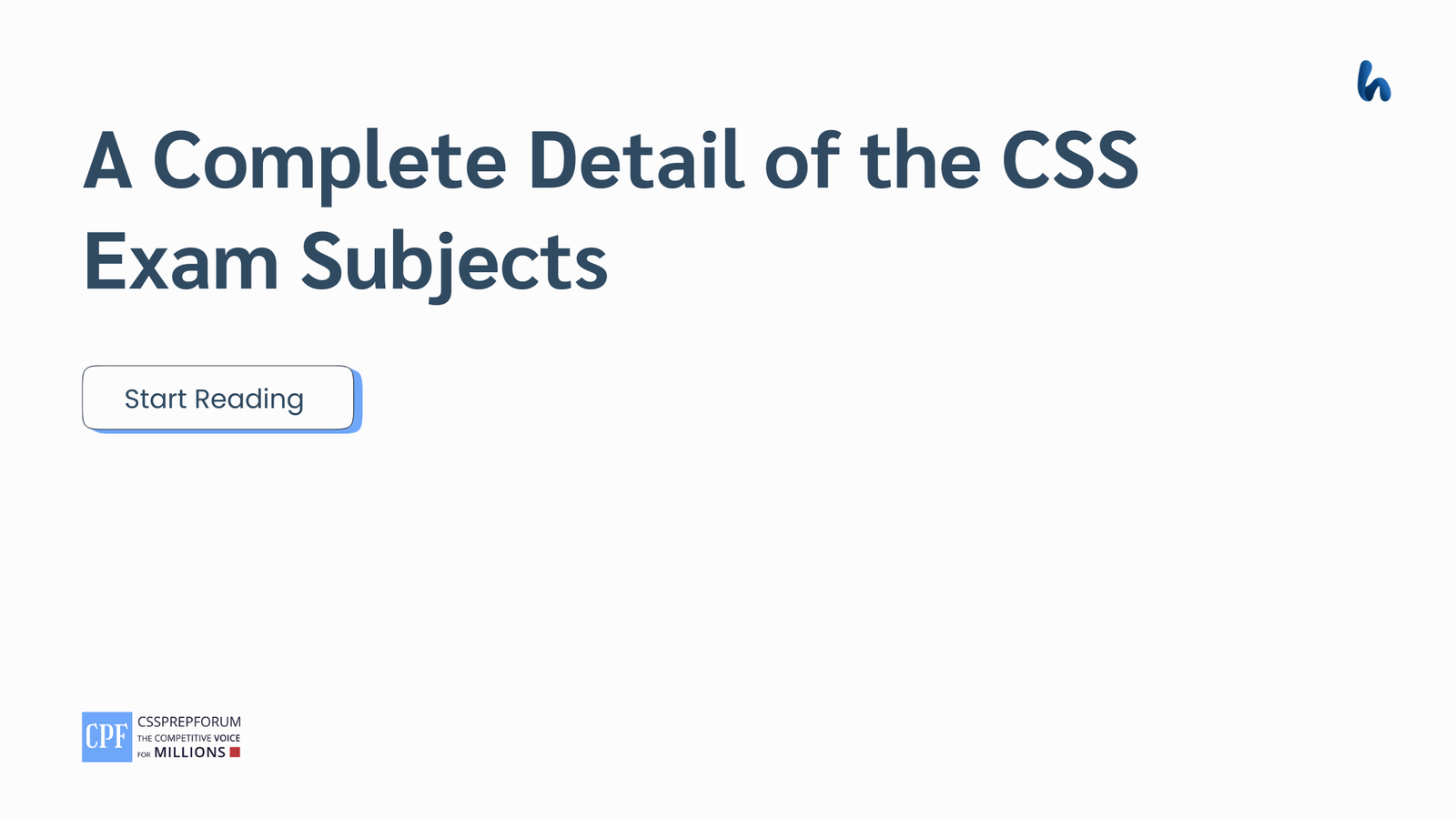CSS 2025 Solved Current Affairs Past Papers | SCO and BRICS a Challenge to American Politico-Economic Dominance in World Politics
The following question of CSS Current Affairs 2025 is solved by Sir Ammar Hashmi, the best Current Affairs Coach, on the guided pattern of Sir Syed Kazim Ali, which he taught to his students, scoring the highest marks in compulsory subjects for years. This solved past paper question is uploaded to help aspirants understand how to crack a topic or question, how to write relevantly, what coherence is, and how to include and connect ideas, opinions, and suggestions to score the maximum.

Question Breakdown
In this question, the examiner has asked two things: first, the emergence of SCO and BRICS and relating it as a challenge to American Politico-Economic dominance in world politics; second, measures that the US can take to counter SCO and BRICS. So, start by describing the emergence of SCO and BRICS and state how it is a challenge to the American-dominated politico-economic world order. Then, suggest measures the US can take to counter them.
OUTLINE
1-Introduction
2-Understanding SCO and BRICS
3-Overview of the US Politico-economic Dominance in World Politics
4-Factors Contributing to the Emergence of SCO and BRICS
- ✓Shift in Global Economic Power
- ✓Geopolitical Factors
5-Challenges posed by SCO and BRICS to American Dominance
5.1-Economic Challenges
- ✓Threat to American Global Markets and Supply Chain
- ✓Development of Alternative Financial System
- ✓BRICS leading towards de-dollarization
5.2-Political Challenges
- ✓Increased Influence in International Institutions
- ✓Promotion of Multipolarity as an alternative to US unipolarity
6-Measures the US can take to Counter SCO and BRICS
- ✓Building new Partnership with Emerging Economies
- ✓Supporting Global Economic Initiatives that include US Interests
- ✓Promoting Free Trade Agreements
- ✓Engaging with SCO and BRICS
7-Conclusion

Answer to the question
Introduction
The geopolitical landscape of the 21st century is witnessing a significant shift, shaped by the emergence of new power blocs, such as the Shanghai Cooperation Organization (SCO) and BRICS (Brazil, Russia, India, China, and South Africa), now BRICS+ with the addition of new members. These organizations have gradually challenged the long-standing politico-economic unipolar hegemony of the United States, which has, since history, shaped global governance and economic systems. However, as the SCO and BRICS expanded their influence, they created a counterbalance to American hegemony, promoting a multipolar world. Notwithstanding, the emergence of SCO and BRICS arises from a confluence of factors, including the shift in global economic power towards emerging markets and growing geopolitical tensions. Therefore, the initiatives adopted by the SCO and BRICS nations have impacted the US hegemony by creating a counterbalance to USD domination as well as the US-dominated financial institutions like the IMF and WB. However, it is high time for the US to consider strategic measures to counteract the influence of SCO and BRICS while reinforcing its position in world politics. To conclude, the question sheds light on the emerging global challenges that seriously threaten US hegemony. Also, it suggests possible measures that assist the state in safeguarding its say.

Overview of SCO and BRICS
Having a cursory glance over the SCO and BRICS is pertinent to understanding the challenges they impose to the US dominance in the politico-economic arena. Thus, the following paragraphs provide a perception of both the organizations and how they influence the region.
- SCO
The Shanghai Cooperation Organization (SCO), established in 2001, comprises eight member states: China, India, Kazakhstan, Kyrgyzstan, Pakistan, Russia, Tajikistan, and Uzbekistan, along with some observer states and partners, adding to its influence in the region. In the course of its objectives, the SCO primarily focuses on enhancing regional security and addressing challenges like terrorism, extremism, and separatism while having economic goals at the top of its list. Therefore, in the economic arena, the SCO aims to foster trade and investment among member states, which creates a platform to foster economic integration and development and, at the same time, strengthens cultural cooperation and mutual understanding. Thus, by enhancing regional security and promoting trade and investment to a great extent, the SCO not only extends its dominance but also signals a threat to the US dominance on politico-economic grounds.
- BRICS
BRICS, an acronym for Brazil, Russia, India, China, and South Africa, represents a union of economic giants aiming to foster cooperation and promote a multipolar world. Established in 2009, BRICS constantly emphasizes economic collaboration, political dialogue, and cultural exchange among its member states, which together account for a significant portion of the world’s population and GDP. However, the primary objectives of the BRICS lie in the challenges it poses to the US hegemony. Having a vision of promoting multipolarity and reducing reliance on the US, the organization has adopted alternative financial institutions, such as the New Development Bank (NDP) and the Contingent Reserve Arrangement (CRA), which challenge the efficiency of the International Monetary Fund (IMF) and World Bank and counter the influence of Western entities in the region. Moreover, the organization has also bypassed the US dollar and encouraged its member states to resort to local currency for trade and investment, signaling a potential threat to the US economy. To sum up, BRICS, a coalition of giant economies, seeks to reform international norms and institutions towards emerging economies.
Overview of the US Politico-economic Dominance in World Politics
Since the end of World War II, the US has maintained a prominent politico-economic dominance characterized by a unique blend of military might and economic power, along with cultural and political influence, representing itself as a global power. Economically, consolidating America as the world’s economic leader, the US dollar serves as the world’s primary reserve currency, facilitating international trade and finance. Politically, positioning itself as a leader in international institutions, such as NATO and the World Trade Organization, the US has championed democratic governance and human rights, projected military power, and created a vast network of alliances and bases worldwide. However, challenges, including the rise of China as a global competitor, the increase of multipolarity in international relations, and the establishment of alternative institutions, have posed a serious threat to the US politico-economic hegemony. To conclude, despite being a global power, the US is witnessing challenges that might counter its dominance.
Factors Contributing to the Emergence of SCO and BRICS
Before delving deep into the context, it is important to understand the factors that led to the rise of SCO and BRICS and their global influence.
- Shift in Global Economic Power
The emergence of SCO and BRICS is significantly driven by a shift in global economic power from the West to emerging economies. To elaborate, while the US and the European Union are grappling with issues such as economic stagnation, political polarization, and rising debts, countries in the Global South are increasing their influence on the global stage. In this regard, the SCO and BRICS serve as platforms for these nations by providing cooperation in trade, security, and cultural exchange, thereby reducing reliance on Western-dominated institutions, such as the IMF and WB. Moreover, the rise of technological innovations in these emerging economies, such as China and India, has shifted the position of economic growth, making them the leaders in manufacturing and information technology. In a nutshell, the transition in global economic power has fueled the rise of SCO and BRICS, challenging the US economic dominance.
- Geopolitical Factors
Additionally, one of the primary factors contributing to the emergence of SCO and BRICS lies in the shift in the geo-political landscape, mainly owing to the giant states of BRICS. As countries in the Global South, particularly the member states of BRICS, aim to assert their economic and political independence, they have gravitated towards these multilateral platforms, BRICS and SCO, to foster cooperation and counter Western dominance. Moreover, the geopolitical environment characterized by the political tensions between the US and Russia, as well as the reorientation of alliances, has encouraged countries to collaborate more closely to preserve their national interest. Thus, these elements undermine the US dominance and move the world towards multipolarity.
Challenges posed by SCO and BRICS to American Dominance
Accordingly, the following paragraphs emphasize the challenges imposed on the US by SCO and BRICS nations. The challenges not only threaten US dominance in the politico-economic landscape but also support the narrative of a multipolar world.
A- Economic Challenges
- Threat to American Global Markets and Supply Chain
The emergence of SCO and BRICS created a serious challenge to the long-term Global Markets and Supply Chains of America. Since these multilateral platforms foster economic collaboration among member states, promote trade and investment in a way that circumvents American trade policies, and enhances the bargaining power of their members, the global markets and supply chain of America may gradually lose their influence and dominance in the region. Therefore, the SCO and BRICS, led by the economic powers of South Globe, may push the American market and supply chain to the brink of collapse with time.
- Development of Alternative Financial System
Moreover, the development of an alternative financial system by SCO and BRICS reduces the dominance of the US financial system, particularly the IMF and WB. To describe further, by facilitating alternative frameworks in the form of the New Development Bank (NDP) and the Contingent Reserve Arrangement (CRA), the BRICS drive the focus of countries towards these frameworks and enable them to empower themselves economically without any threat to their sovereignty. Thus, developing an alternative economic system challenges the frameworks of the US- IMF and WB- and makes the countries economically independent from the US-centric institutions.
- BRICS de-dollarization
Additionally,byresorting to local currencies for trade and investment, the BRICS has threatened the supremacy of the US currency, causing tensions in the West. To elaborate, Historically, the US dollar has been the world’s primary currency, facilitating international trade and investment. However, the BRICS nations seek to reduce their dependency on the dollar, which is a symbol of the US hegemony. These countries have started making trade agreements with their local currencies since such an initiative provides an opportunity for sanctioned countries like Russia and Iran to circumvent sanctions and foster their economic well-being. Therefore, BRICS aims to establish a multipolar financial system that dilutes the influence of the US dollar.
B- Political Challenges
- Increased Influence in International Institutions
Politically,even in the political landscape, the BRICS nations, particularly China and Russia, have left no grounds for the US dominance. Both organizations, including emerging economies such as China, India, and Russia, seek to enhance cooperation in political and cultural realms and economic collaboration. The SCO aims to hold regional security and counter-terrorism in its hands and withdraw the US’s intervention. At the same time, BRICS challenges the influence of US-centric institutions in the region, undermining the influence of the US and its alliances. Therefore, the collaborative work of both institutions not only intricates US foreign policy but also gravitates more countries towards them.
- Promotion of Multipolarity as an alternative to unipolarity
Besides, the more the coalition among BRICS and SCO nations expands, the more the US hegemony becomes vulnerable to these threats. As these organizations facilitate political alignment among their countries and seek to promote multipolarity, the US will be less able to shape international norms and institutions, undermining its hegemony. Moreover, both organizations strongly advocate for a multipolar world, and by gravitating more countries towards them through economic and political collaboration and cooperation on their platforms, they aim to counter unipolarity. Therefore, the coalition of SCO and BRICS with the same vision of promoting multipolarity signals a serious political threat to the US influence.
Measures the US can take to Counter SCO and BRICS
Nonetheless, there is always a way when there is will. By adopting the following measures, the US can regain its regional influence and counter the multipolar narrative.
- Engaging with SCO and BRICS
To begin, it is important for the US to shift its approach from confrontation to engagement with both the organizations, SCO and BRICS nations. In this regard, by fostering diplomatic ties and economic partnerships with the member states, especially by effectively engaging with Russia and China, the US can present itself as a cooperative alternative to the narrative provided by these organizations. Such engagements could involve trade agreements that promote fair trade practices and economic development, which can counter the economic allure of BRICS. Therefore, the US needs to soften its reactions and take diplomatic initiatives to gradually overcome the BRICS and SCO threats to its influence.
- Building new Partnership with Emerging Economies
Moreover, it is high time for the US to shake hands with emerging economies instead of unsheathing swords and adopting harsh approaches, which may worsen the situation and result in intense counteract. Therefore, by cultivating partnerships with emerging economies, emphasizing shared values, economic cooperation, and collaboration on security, the US can strengthen its diplomatic relationships with BRICS and SCO nations. Hence, developing new partnerships with emerging economies can pave the way for economic cooperation and political collaboration that would reduce the rivalry and increase the US alliances, safeguarding its hegemony.
- Supporting Global Economic Initiatives that include US Interests
Moreover, prioritizing and supporting global economic initiatives that align with the US strategic interests would provide an opportunity for the state to safeguard its say. For this purpose, enhancing partnerships through multilateral trade agreements, such as the Trans-Pacific Partnership (TPP) or its successor frameworks, would assist the US in counterbalancing the economic influence of China and Russia. Moreover, investment in infrastructure development initiatives in emerging markets, akin to the BRI of China, would strengthen its allies and foster its diplomatic interests. Therefore, the state can foster its influence by focusing on economic initiatives that include US interests.
- Promoting Free Trade Agreements
Last but not least, like SCO and SAARC, the US can strategically promote Free Trade Agreements (FTAs) with like-minded countries to counter the influence of SCO and SAARC. Such agreements can serve as a platform for the US to strengthen its economy, ensure stability, and foster diplomatic relations with partner nations. Moreover, through FTAs, the US can set high labour standards, environmental protection, and intellectual property, creating a favourable economic landscape that reinforces geopolitical influence. Thus, such initiatives can create alliances for the US and secure its dominance as a global politico-economic power.
Conclusion
In conclusion, the emergence of the Shanghai Cooperation Organization and BRICS signifies a pivotal shift in international relations, imposing a threat to the US. politico-economic dominance. The economic and political strategies employed by these coalitions not only threaten traditional American influence but also advocate for a multipolar world, where power is distributed among various nations rather than concentrated in a single hegemonic state. To effectively counter these developments, the United States must adopt an efficient approach, emphasizing the importance of building new partnerships with emerging economies, supporting global initiatives that align with American interests, promoting free trade agreements, and engaging directly with these organizations. By fostering collaboration and asserting its role within the changing global landscape, the US can counter the challenges posed by SCO and BRICS, ensuring its influence in the evolving world order.

CSS Solved Past Papers’ Essays
Looking for the last ten years of CSS and PMS Solved Essays and want to know how Sir Kazim’s students write and score the highest marks in the essays’ papers? Then, click on the CSS Solved Essays to start reading them.
CSS Solved Essays
CSS Solved General Science & Ability Past Papers
Want to read the last ten years’ General Science & Ability Solved Past Papers to learn how to attempt them and to score high? Let’s click on the link below to read them all freely. All past papers have been solved by Pakistan’s top CSS GSA coach having the highest score of their students.
General Science & Ability Solved Past Papers

